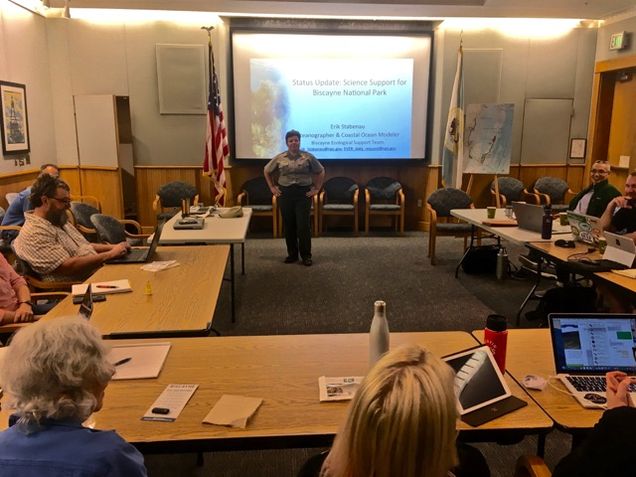The Kaufman Lab is conducting comparative research in different parts of the world to better understand the system dynamics that occur between natural ecosystems and human society. Their newest study site is Biscayne Bay, front yard to the Miami metropolitan area’s 7 million people, and home to tropical forest, mangrove forest, seagrass meadows and coral reefs. On January 29th and 30th, the lab led a workshop that gathered together ecological modelers, oceanographers, hydrologists, resource managers and wildlife specialists to assemble a picture of how Biscayne Bay works. The result was a realization that the fate of Biscayne Bay is shaped by the well-being of the entire South Florida’s landscape of iconic reefs, keys and Everglades. The group realized that in the face of climate change and runaway development, the importance of Biscayne Bay to Florida’s ecological and human health is on the rise.

The meeting spurred new field work and modeling to guide stewardship efforts. The working group is planning for a science symposium, special journal issue, and stepped-up restoration and management interventions in the coming few years. BU folks involved include Professor Les Kaufman (marine ecology), Professor Suchi Gopal (GIS and remote sensing), Professor Roel Boumans (ecological economic modeling), Mr. Joshua Pitts (programming and visualization), and doctoral student Ms. Katey Lesneski (coral biology). The work is supported by a grant from the Herbert W. Hoover Foundation. The lab’s interdisciplinary program on coupled human and natural systems (CHANS) is based at BU’s Pardee Center for the Study of the Longer-Range Future.